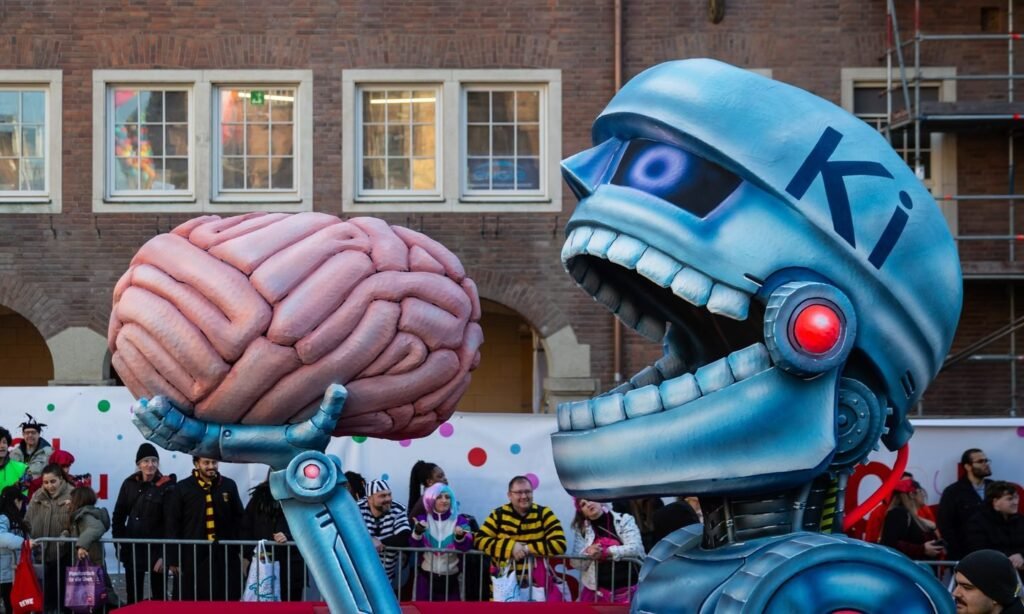Ever since the release of ChatGPT in late 2022, there have been numerous alarming headlines predicting a grim future for workers:
-
“We asked ChatGPT which jobs it thinks it will replace — and it’s not good news for data entry professionals or reporters” — Fortune, Feb. 8, 2023
-
“Goldman Sachs Predicts 300 Million Jobs Will Be Lost or Degraded by Artificial Intelligence” — Forbes, March 31, 2023
-
“Here’s how many U.S. workers ChatGPT says it could replace” — CBS News, April 5, 2023
-
“ChatGPT AI lists jobs it can do better than humans as millions could be put out of work” — Fox Business, April 5, 2023
-
“ChatGPT took their jobs. Now they walk dogs and fix air conditioners” — The Washington Post, June 2, 2023
-
“This A.I. Company Wants to Take Your Job” — The New York Times, June 11, 2025.
Despite these alarming predictions, a report from Yale Budget Lab on Oct. 1 reveals that in the nearly three years since ChatGPT’s release, there has been no significant disruption in the labor market as feared. People have not shifted between jobs, new roles have not emerged at scale, and workers have not been automated out of their positions. It seems that AI has not yet targeted your job.
The report suggests that while concerns about AI replacing human jobs persist, history shows that new technologies typically take decades to revolutionize the workplace.
While worries about AI persist, a poll conducted by Reuters/Ipsos from Aug. 13-18 found that 71% of respondents are concerned about AI permanently displacing workers.
The Budget Lab report indicates that AI has not yet significantly disrupted the job market, but certain occupations and experience levels remain vulnerable to potential threats.
Job safety varies by field
While the impact of AI on job displacement and creation remains unclear, certain fields are more likely to be affected than others, depending on the level of automation possible in each role.
A study from the University of Pennsylvania Wharton School of Business on Sept. 8 categorized jobs based on their exposure to automation by generative AI.
Occupations with the highest exposure (50% and above):
-
Office and administrative support: 75.5%.
-
Business and financial operations: 68.4%.
-
Computer and mathematical: 62.6%.
-
Sales and related occupations: 60.1%.
Occupations with moderate exposure (30%-49.9%):
-
Management occupations: 49.9%.
-
Arts, design, entertainment, sports and media: 45.8%.
-
Architecture and engineering: 40.7%.
-
Life, physical and social science: 31%.
Occupations with lower exposure (20%-29.9%):
-
Educational instruction and library: 29.5%.
-
Community and social service: 27.5%.
-
Healthcare practitioners and technical: 23.1%.
-
Protective service: 20.7%.
-
Transportation and material moving: 20%.
Occupations with the lowest exposure (less than 20%):
-
Food preparation and serving: 18.1%.
-
Personal care and service: 17.5%.
-
Health care support: 15.5%.
-
Installation and maintenance and repair: 13.1%.
-
Farming, fishing and forestry: 9.7%.
-
Construction and extraction: 8.9%.
-
Building and grounds cleaning and maintenance: 2.6%.
A report from Sen. Bernie Sanders (D-Vt.) on Oct. 6, utilizing a ChatGPT-based model, indicates that nearly 100 million jobs could be automated or replaced by AI in the next decade.
-
Fast food and counter workers (89%).
-
Customer service representatives (83%).
-
Laborers and freight, stock, and material movers (81%).
-
Secretaries and administrative assistants, except legal, medical, and executive (80%).
-
Stockers and order fillers (76%).
-
Bookkeeping, accounting, and auditing clerks (76%).
-
Office clerks, general (66%).
-
Teaching assistants, preschool, elementary, middle, and secondary school, except special education (65%).

